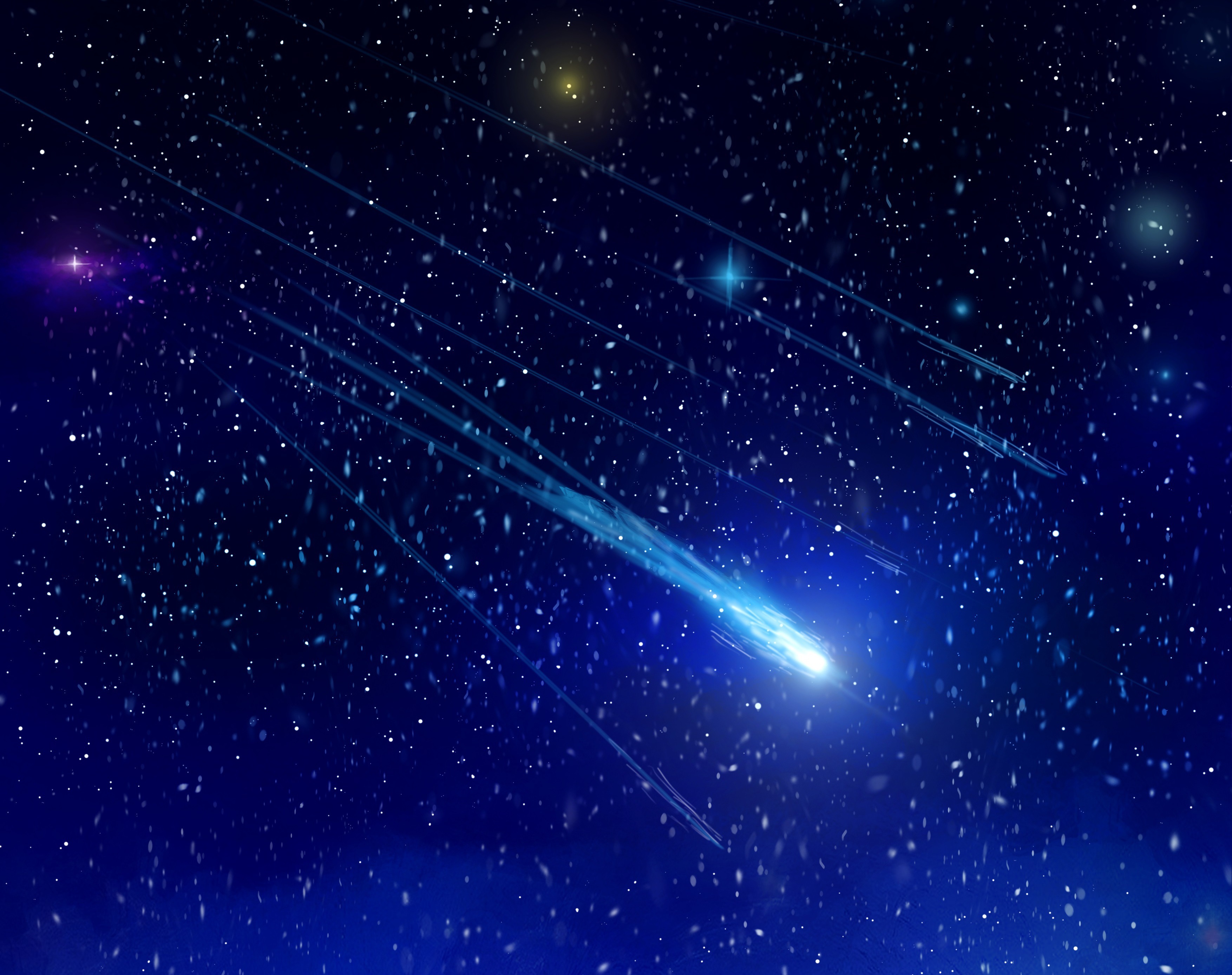
Any light pollution or moonlight considerably reduces the count.
#SEEING SHOOTING STARS HOW TO#
(Image credit: Chris Vaughan/Starry Night) How to watchĪ very good shower like the Perseids will produce about one meteor per minute for a given observer under a dark country sky. 12 showing the Perseids and their radiant point in the Perseus constellation. local daylight time), the radiant has climbed to around 60 degrees ( or six fists) above the northeast horizon for observers at mid-northern latitudes.Īn illustration of the night sky on Aug. So, at the time of the break of dawn (around 4:30 a.m. Your clenched fist held at arm's length measures roughly 10 degrees in width in the sky. As the night advances, and as the radiant rises progressively higher in the northeast, the meteors arrive more nearly straight down, and we see more of them. In the early-evening hours the radiant is low in the north-northeast, so the meteors strike the upper atmosphere at a low angle - and therefore we see comparatively few of them per square kilometer at the atmosphere's top. Meteors appearing near the radiant will display short trails because we see them nearly head on, while those far from the radiant, are seen broadside, hence look much longer. The meteors' apparent divergence from this radiant point is an effect of perspective the meteoroids are actually traveling in parallel through space.
#SEEING SHOOTING STARS PATCH#
On the peak night, the Perseids will appear to diverge from a patch of sky between the Perseus and Cassiopeia constellations near to the famous Perseus Double Cluster. They ram into Earth's atmosphere at a speed of 40 miles (60 km) per second, creating incandescent trails of shocked, ionized air as they vaporize. These meteoroids of the Perseid stream range from sand grains to pebbles and have a consistency like bits of cigar ash. This debris keeps traveling along near the comet's orbital path, creating a sparse "river of rubble" in space. The comet sheds bits of its material each time it returns near the sun. The source of the Perseid shower is comet 109P/Swift-Tuttle, which orbits the sun in a long, roughly 130-year ellipse. (Image credit: Dennis Cassia) Meteor basics For this 4.5-minute exposure, he used an f/2.8 Yashica 50 mm lens and Tri-X film, developed five minutes in D-19 at 75° Fahrenheit. 11, 1967 as it passed between the zero-magnitude star Capella (top right) and second magnitude Menkalinan (second brightest star). Typically, during an overnight watch, the Perseids are capable of producing a number of bright, flaring and fragmenting meteors, which leave fine trains which can persist for several seconds or more in their wake.ĭennis Cassia, a veteran astro-photographer based in eastern Fairfield County, Connecticut, filmed this fine Perseid on Aug.

An observer with a quick eye under a dark sky might typically see more than 60 Perseids per hour between midnight and dawn. Their rates, however, can vary a lot from year to year. 12, so these "shooting stars" appear almost like clockwork. Earth's orbit carries us through the densest part of the Perseid meteoroid stream every year around Aug. The Perseids are one of the two strongest and most dependable annual meteor showers (the Geminids of December being the other). Many families on August vacations at dark, country sites discover these meteors on their own, and late-summer campers often pull their sleeping bags out of their tents to enjoy this "Old Faithful" shower.

The meteor shower used to be called the Tears of Laurentius, because the shooting stars appear around the name day of Sint-Laurens.Circumstances this year will be nearly ideal for watching the annual Perseid meteor shower at its predicted maximum late on the night of Aug. The Perseids are known to hurtle through the sky at speeds of more than 200,000 kilometers per hour. When the Earth passes through the comet's debris cloud in its orbit around the Sun, these particles burn up in the atmosphere at an altitude of 100 kilometers. In reality, they are dust particles and chunks of the comet Swift-Tuttle.

The Perseids are called so because the shooting stars seem to come from the constellation Perseus. Many meteors will also be seen during the night from Sunday to Monday. Around 4 a.m., an average of about 50 to 60 meteors per hour should be shooting across the sky. This number increases in the course of the night. On Saturday night, about 30 shooting stars per hour can be expected around midnight. Fewer meteors can be seen in cities because of light pollution. Those who want to see the shooting stars should look to the northeast, preferably from a dark location.


 0 kommentar(er)
0 kommentar(er)
